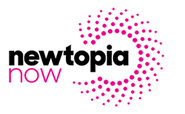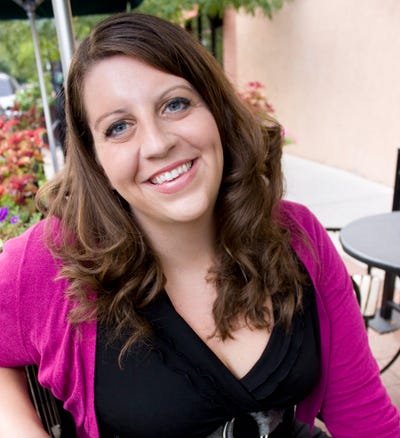Money talks: Advice for early stage CPGs seeking fundsMoney talks: Advice for early stage CPGs seeking funds
Raising capital is difficult, especially in the beginning. Find out what suggestions a panel of experts have for new founders.
July 21, 2024

For many early-stage founders, raising capital to a daunting process.
In the current financial climate, it’s even more challenging.
“This is as difficult environment as I’ve seen in 40 years,” Gary Hirshberg, CEO of Hirshberg Entrepreneurship Institute, says during a panel discussion, “How Early-Stage CPGs Should Talk to Investors.”
It’s not just finding a funding source, but the right investor for your company.
“But how do you know what is the right investor for your company?” says Elliot Begoun, founder and brand champion, TIG Brands. “How do you align around a shared vision for the business and desired outcome?”
It’s hard enough to raise money in the best of times, he says, but it’s even harder when there’s a complete misalignment.
“This is all about having options,” Begoun says. “One is better than the other, it’s not good versus evil. It’s about alignment.”
Here are highlights of Hirshberg Entrepreneurship Institute’s deep-dive into what early-stage CPGs should share with investors.
Tell investors why they should join your business
Founders spend time telling consumers why their products are great and should be purchased or why retailers why they should carry their product.
“That’s totally different from what you should tell an investor,” says Andy Whitman, managing partner at Loft Growth Partners. “You’re selling securities, which is a legal thing.”
Talk about why investors should want to be part of your business and why they should invest, Whitman says.
Give investors a reason to believe: Talk about your brand and category
More than anything else, you’ve got to give people a reason to believe, Whitman says, and keep it simple.
“Whether you’re a napkin-idea that’s pre-revenue of a $50 million business, I think the same five things apply,” Whitman says.
Start by talking about your brand and category. Share how you have a differentiated approach. Ideally, it’s in a large and growing category. More importantly it’s an exciting category, Whitman says.
Qualify why you are being different, says Noah Kraft, co-founder and CEO of Wonderbelly, a digestive health company that raised a $12 million Series A in April. “Differentiation has to be qualified with an understanding of what has already worked in the space,” Kraft says. “Just being different is not enough.”
You have to be different but understand and recognize why a competitor or another company has been around for 100 years and has millions in revenue, he explains.
“Take aspects of what they are doing right and then add to them,” Kraft says. “Differentiate without just being different for different’s sake.”
Want an example? Jones Soda once launched a Turkey & Gravy Soda. “Needless to say, it didn’t get a lot of traction,” Whitman says.
Next, share how you’re doing well
“Whatever that means,” Whitman says. “If you’re pre-revenue that means we’re making traction, our product is getting reviews and informal dialogue.”
If you’re in a conventional retailer, share how you compare to other brands. “If you’re further along, share trial and repeat metrics,” Whitman says. Explain why you’re doing well and getting traction.
Illustrate how this is just the beginning
Whitman says to offer where your brand is in terms of growth, margins, profitability or all three—but give investors a reason to believe your company is just at the beginning.
Articulate why you’re the right person to do this
It doesn’t matter if you’re a solo entrepreneur or a collective group, share why you’re the right person or people to pull this off, Whitman says.
Finally, put yourself in the investor’s place
“Everybody’s heard this is my last raise, I need $1.62 million and that’s all the money I’ll ever need,” Whitman says. Not only will investors laugh at your precision, but everyone knows brands sometimes need a few extra dollars, especially if they hit a bump, he says.
“Think about this from the other person’s perspective,” Whitman says. “What’s in it for them?”
Be honest and realistic
“Self-awareness is the most important thing,” Kraft says. “One of the things I learned jumping from tech to CPG is how different the expectations are of what is acceptable and what you should be trying to achieve.”
It’s a careful balance of being honest while still trying to be a salesperson. “Investors know how to sniff out b.s.,” he says. “That’s their job.”
Kraft tries to be very open and honest about what things could be problematic and share the potential for it to happen.
Don’t raise capital just because you can
Capital is a commodity, Kraft says, but don’t raise capital just because you can.
While working in tech, Kraft, a serial entrepreneur who co-founded Doppler Labs, a now-defunct company that made wireless smart earbuds.
“I was able to raise capital at valuations that actually hampered the business because it made it so the exit was not sustainable,” Kraft says. “I had to hit multiples, which is the reverse of what a lot of people may run into.”
Focus on regional growth
Tonya Donati, founder and CEO of Mother Kombucha, says her self-manufactured, Certified B Corp, women-owned kombucha and functional beverage brand shifted its focus to take a more regional approach.
“Kombucha has taken a shift, much like craft beer, and become quite regional,” Donati says. “So, we have shifted our focus to growing deep with a very regional focus so we can grow our business sustainably, maintain 50% margins and reach double digit EBITDA within the next three years.”
Over 10 years, Mother Kombucha has raised $3 million dollars, Donati says, with approximately 65% via equity through angel investors and crowdfunding and the other 35% through debt instruments.
Pay attention to unit economics
It can be difficult to know what data points surrounding traction are meaningful and which ones aren’t, says Kyle Koehler, co-founder and CEO of Wildway.
Sonal Khakahar, founder and CEO of Aahana’s Lentil Bowls wants to grow slowly while raising money. Much of the focus is on being profitable before the brand makes a really big jump.
“That way we are not stressed about making an exit or getting a second round,” she says. Her advice is to focus on unit economics when you are raising money.
“People don't necessarily go out of business because they have a bad idea—that is occasionally the case—but usually it's because they run out of cash,” Whitman says.
Focus on metrics that translate to cash
Look at contribution margins. “If that number is puny, you just you can't make it up in volume, let alone if it's negative,” Whitman says. “Then you definitely can’t make it up in volume.”
Look at sell-through rates, trial-and-repeat metrics and average order value if you’re on Shopify or similar Amazon metrics.
Be persistent and resilient
Raising capital is always a slog, Kraft says. The earliest money is the hardest to raise, Kraft says, because you’re asking someone to take the highest risk.
“For every yes I got, I got 10,000 nos,” Kraft says. “It’s really important to remember fundraising is getting punched in the face and saying thank you. All you need is one person to say yes.
“You have to be willing to have a lot of people tell you, you’re an idiot and have the conviction to say, ‘No, I’m not. I’m putting my whole life into this.” Someone’s going to say yes. It’s never easy. I’ve done it a lot and every time it’s a challenge.”

Looking for investors to support your CPG? See Investor’s guide to experiencing Newtopia Now for a list of networking opportunities during New Hope Network’s new trade show. For more information, For more information and to register, visit the Newtopia Now website.
Read more about:
Newtopia NowAbout the Author
You May Also Like





